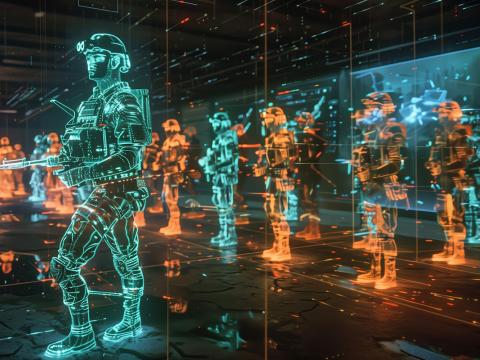A Critical Piece of the National Security Puzzle
The U.S. Coast Guard plays a vital role helping tie together pieces of the national security community. The Coast Guard is unique in that, while it is a military service, organizationally it sits within the U.S. Department of Homeland Security and clearly has homeland security/counterterrorism, public safety and law enforcement roles. This positioning within several national security communities allows the Coast Guard to provide an invaluable coordination and linking function.
As a military service, the Coast Guard operates in the .mil environment to share information with the defense community. Yet, because the Coast Guard is part of the Department of Homeland Security, it also operates in the .gov environment to share information with other federal civil organizations. It also must operate in various public safety and law enforcement networks and, sometimes, in coalition networks. Adding to this complexity, the Coast Guard conducts operations in the sea, land, air and cyber domains.
Not surprisingly, given the complexity and diversity of the Coast Guard mission, it has the full spectrum of command, control, communications, computers, intelligence, surveillance and reconnaissance (C4ISR) and information technology requirements. Certainly these include processing and data center capacity, security and, these days, virtualization. All of the Internet technologies, network provisioning, administration, control and security and edge technologies are important to the Coast Guard. Wireless and mobile technologies have a particular premium for the Coast Guard, which is widely dispersed and very dynamic.
The Coast Guard has been very innovative in addressing its complex set of C4ISR and information technology needs. The service often operates in challenging environments where the infrastructure can be insufficient or damaged. Being able to extend networks wherever it has to go is important. And, it has to collaborate with many other government agencies and with industry.
As with all elements of the national security community, the Coast Guard is involved in the increasingly complex and dangerous cyber domain. As we all know, the cyber threat affects everyone in government, industry and the private sector. As a result, it is critical that the Department of Homeland Security—which has the overall federal lead for cyber security, responsibility for the security of the .gov environment, and the reach into industry and the private sector—works closely with the Defense Department, which is responsible for the security of the .mil environment and all defense networks. It now is the policy of the two departments to work together, and cooperation with the Department of Homeland Security is one of the highest priorities of the U.S. Cyber Command.
Because the Coast Guard has a foot in each department and operates in both network environments, it is uniquely positioned to help with interoperability and cooperation and to help achieve universal network situational awareness. If anyone asks the joint or service cyber commands or the Department of Homeland Security what the greatest challenges are in cyber security, they consistently will answer that lack of comprehensive and real-time situational awareness across the Internet and all enterprise networks is near the top of the list.
The Coast Guard has been instrumental in the past decade in furthering situational awareness in other warfighting domains. It has played a key role in achieving integrated maritime domain awareness as well as an integrated air picture. It will play a critical role in integrating the cyber domain awareness picture as well. Anyone working network management, network analysis, network operational control, and/or network situational awareness would be well served by including the Coast Guard in their dialogue.
Rear Adm. Robert E. Day Jr., USCG, is the Coast Guard chief information officer (CIO)/CG-6, and he has been responsible for standing up the Coast Guard Cyber Command, which is the component command of the U.S. Cyber Command. Adm. Day is a great Coast Guardsman and a great AFCEAN. Wherever in the community you sit, if you have not worked with the Coast Guard or familiarized yourself with its requirements, I encourage you to do so. If you have solutions that can help the Coast Guard meet its mission requirements, I am sure that Adm. Day and his staff would want to talk to you.
Thanks to all of you for what you do every day for national and global security. On this occasion, thanks particularly to all Coast Guardsmen—we appreciate all you do, often under very difficult conditions, and the profound contribution you make to our security.




Comments